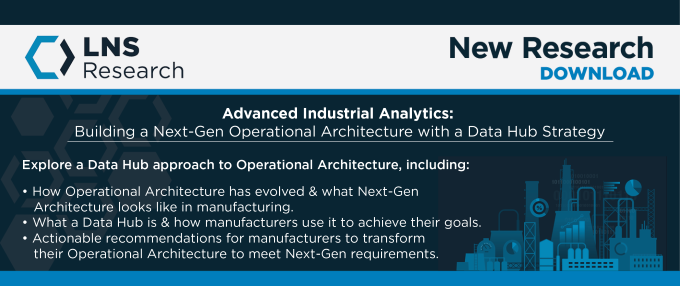As the first half of 2023 is behind us, the LNS Research Team is finalizing our 2024 research agenda. Typical of the beginning of each year, the analyst team produced annual predictions with an assessment of the previous year's predictions. While I would never have predicted a move into research advisory after over 20 years in manufacturing, here I sit after just over a year since taking the significant pivot to becoming an industry analyst.
With unique insights into end-user challenges and the plethora of emerging technology, 2024 research will provide industrial organizations with insights that accelerate the maturity of the Future of Industrial Work (FOIW), EHS, and Sustainability transformation initiatives. LNS Research advisory across my coverage areas will be centered on the 3 P's critical to manufacturing:
-
-
-
People
-
Planet
-
Profit
Before I dive into the research agenda for the next year, first, let's review some key factors impacting industrial organizations and influencing research operations planning.
Manufacturing and the Productivity Plateau
Employment trends indicate a productivity tipping point began with the dotcom bust in the late 1990s, with manufacturing falling into a persistent plateau (Figure 1). Twenty years later, industrial organizations haven't been able to adjust to the shortage of qualified workers and need help breaking through the productivity plateau. Manufacturers' productivity challenges and the need to turn business away due to frontline workforce challenges have caused the cost of goods to rise steadily.
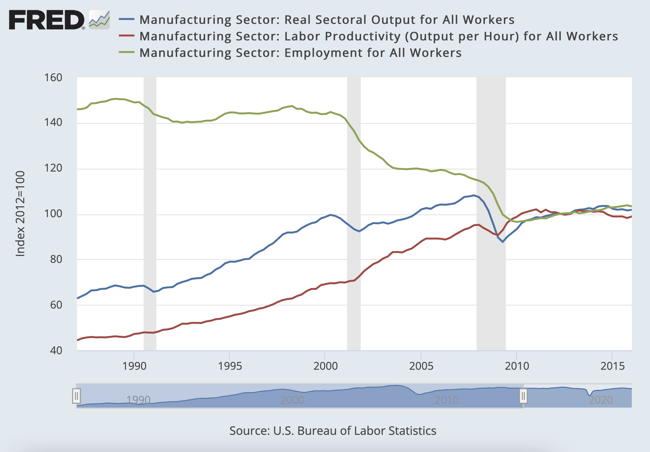 Figure 1: Persistent Productivity Plateau
Figure 1: Persistent Productivity Plateau
LNS Research has shown that the industry trends impacting businesses have been relatively consistent: supply chain complexity, the need for digital transformation, and the push to improve Sustainability/ESG performance. COVID learnings modified the ways we interact, live, and work. The future looked bright, yet as restrictions began to lift, other issues continued to impact supply chain challenges (e.g., Ukraine/Russian War and recession concerns).
Manufacturers must accept dramatic changes are necessary with an Industry 3.0 focus on technology that has highlighted glaring shortfalls. The labor crisis significantly contributes to supply chain and supplier network challenges. The way out isn't just technology but the application of technology, focused on ease of use to simplify complexities.
Prioritizing People and the Future of Industrial Work
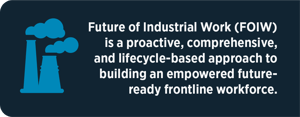 Disruptive technology is a good thing, but without the right approach, Industrial Transformation (IX) can only lead to disrupting the workforce, fueling the labor crisis fire. Connected Frontline Workforce (CFW) technology is a crucial component of IX success, but as the productivity plateau proves, Industrial Transformation requires more than just technology. LNS Research has evolved over the years and expanded from the broader connected worker topic to the more holistic Future of Industrial Work, as shown below.
Disruptive technology is a good thing, but without the right approach, Industrial Transformation (IX) can only lead to disrupting the workforce, fueling the labor crisis fire. Connected Frontline Workforce (CFW) technology is a crucial component of IX success, but as the productivity plateau proves, Industrial Transformation requires more than just technology. LNS Research has evolved over the years and expanded from the broader connected worker topic to the more holistic Future of Industrial Work, as shown below.
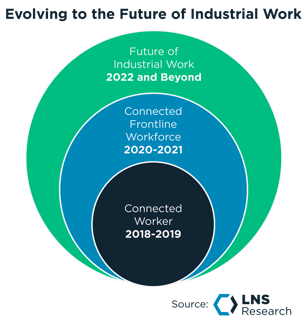 Manufacturing must recognize that IX programs must involve and incorporate FOIW best practices. The most consistent challenge with Digital Transformation has been the need for more focus on the human element impact. A shift in this mindset is required by organizations to meet the needs of their workforce, with the first step realizing the created reality must prioritize people for IX success.
Manufacturing must recognize that IX programs must involve and incorporate FOIW best practices. The most consistent challenge with Digital Transformation has been the need for more focus on the human element impact. A shift in this mindset is required by organizations to meet the needs of their workforce, with the first step realizing the created reality must prioritize people for IX success.
Workforce initiatives have shown significant advantages. Tight alignment across other initiatives and programs is consistent among FOIW Leaders, with the top 19% making significant progress. 2024 research will provide a transformation template that Vice Presidents of Global Operations need to secure a future-ready workforce. FOIW research will include business objectives, initiatives, and technology selection best practices and a way to assess and mature IX programs for ultimate success.
Operationalizing Sustainability for Improved Performance
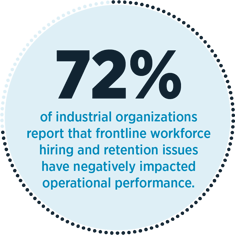 Global Operations VPs have long been fighting to maintain shop floor stability, whereas the top floor (corporate executives) have increasingly been challenged to recognize manufacturing's impact on the planet. Stakeholder demands have driven a strong linkage of pay related to improving performance across the environmental, social, and governance (ESG) dimensions. The aggressive sustainability targets set with once thought distant dates have been quickly approaching and are now a looming priority.
Global Operations VPs have long been fighting to maintain shop floor stability, whereas the top floor (corporate executives) have increasingly been challenged to recognize manufacturing's impact on the planet. Stakeholder demands have driven a strong linkage of pay related to improving performance across the environmental, social, and governance (ESG) dimensions. The aggressive sustainability targets set with once thought distant dates have been quickly approaching and are now a looming priority.
The 2008 recession saw many company's back-burner sustainability progress and focus mainly on the risks rather than the opportunity the next-generation sustainability paradigm offers. Seventy-two percent of industrial organizations have seen negative impacts on operational performance related to attracting and retaining a quality workforce. Heads of Operations and Sustainability/EHS must find a way to overcome both workforce challenges and make marked progress against interim ESG goals most need to catch up to.
Research in the next year will provide a path to the people-related aspect, improving recruitment, training effectiveness, and EHS performance (FOIW), as well as expand the LNS Research framework presented in the Operationalize Sustainability: Align and Embed for Step Change Performance Improvement report (Figure 2). The 2024 EHS 4.0 Solution Selection Matrix will evaluate the digital technologies that improve data capture, automated analysis, and ease of EHS reporting essential to meeting workforce and sustainability challenges.
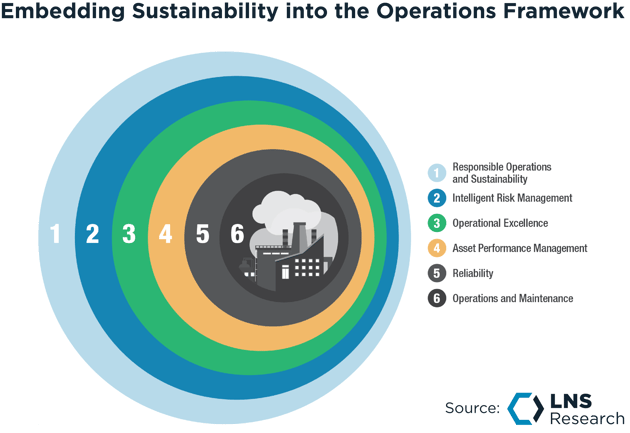 Figure 2
Figure 2
Realizing Data Driven Profitability
An effective strategy is often the barrier for many organizations to reach proven operational performance and profitability rewards provided by Sustainability initiatives (Figure 3). Revenue and profit margins are essential for long-term business success. Stakeholders expect manufacturers to deliver on announced goals, and there will be more accountability toward validating reported results.
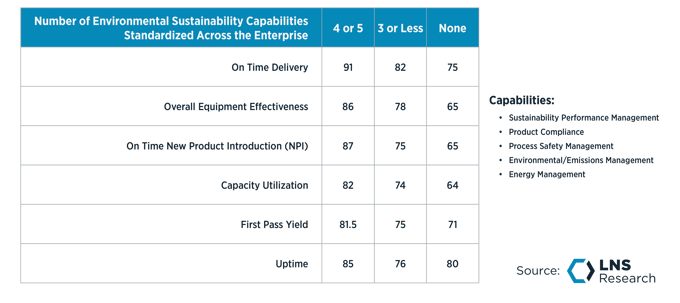 Figure 3: Sustainability Drives More Profitable Operations
Figure 3: Sustainability Drives More Profitable Operations
The abundance of IT and OT data continues to climb. Creating the data and storing massive amounts of it isn't free. Insight is required to identify the areas most profitable to improve and drive sustainable improvements. Predictive and Prescriptive Analytics programs can provide insight across the entire process to improve profit margins and revenue across the business. Having proper data management and architecture unleashes the power of advanced analytics to identify the areas to target, monitor change, and adjust accordingly. For IX programs to move from the vision-focused stage to a value-focused stage, the heads of Operations and Sustainability within the organization must work together with data continuously assessing the progress against the corporate executive and stakeholder set success factors.
Over the next year, LNS Research will help industrials with how to rearchitect teams, processes, strategies, and methodologies that improve data quality for decision-making while providing traceability to pass increased levels of public scrutiny. Data insights will provide a clear path across the Transformation Chasm for the IX program to mature from vision to value and accelerate results. Agility will be essential as companies with dynamic operations and economic uncertainty are a certainty.
Who will succeed in a world that ceases to change?
Abandoned facilities across the globe bear witness and provide examples of the overwhelming failure to transform, with communities and the planet shouldering the impact. The developing labor crisis will continue to make it harder for operations to be the lone profit center. Regulatory pressure will drive the need for more digitization to meet reporting requirements and to monitor progress toward goals that mitigate the environmental crisis.
End users will need to navigate the noise and identify the key areas where change management practices aren't able to achieve sustainable transformation. Those who see Digital Transformation as the new way of working and who can pivot support functions such as EHS from a cost center to a profit center will be the ones to succeed. The degree to which best practices are implemented across people, process, and technology improvements will determine the level of success reached.
Continue to follow LNS Research as we dive deeper into the Future of Industrial Work and EHS 4.0 approaches that meet the needs from the shop floor to the top floor to identify best practices that deliver the most value – for people, planet, and profit.
